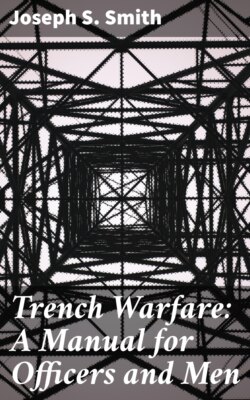Читать книгу Trench Warfare: A Manual for Officers and Men - Joseph S. Smith - Страница 7
На сайте Литреса книга снята с продажи.
RESISTANCE OF ROOFING MATERIALS
ОглавлениеTable of Contents
(a) Shrapnel bullets—Stout planks suitably supported and covered with corrugated iron and 12″ of earth or 3″ of shingle.
(b) Ordinary guns of 3″ caliber—Strong timber supporting 4 ft. of earth with a top layer of heavy stones or broken bricks to cause early shell burst.
(c) Field howitzers (of less than 6″ caliber)—12″ logs, supporting 8 ft. of earth with top layer of heavy stones or broken brick and lightly covered over with some earth.
(d) “Jack Johnsons”—20 ft. of earth or 10 ft. of cement concrete, reënforced with steel and covered over with a covering of heavy stone or broken brick.
It is very often the case that there is a line of trenches with very few dugouts. Those that exist are mainly occupied by first aid stations with a medical officer in charge, and officers’ headquarters. When such is the case, very narrow, deep trenches, known as retirement trenches, are dug roughly from 20 to 50 yards behind the firing line, so that every one, except those on sentry duty, may retire there during the heavy shelling. It is very obvious that excellent communication must be kept up between this trench and the firing line.
